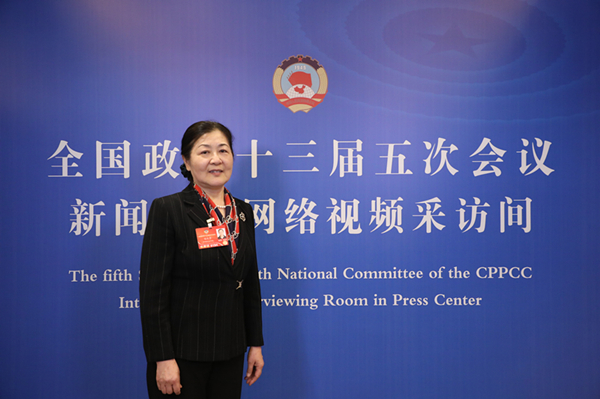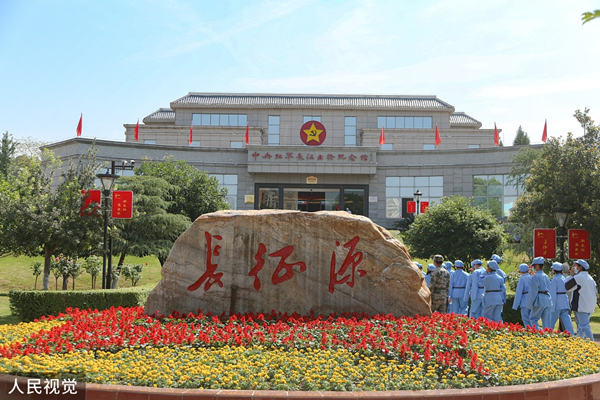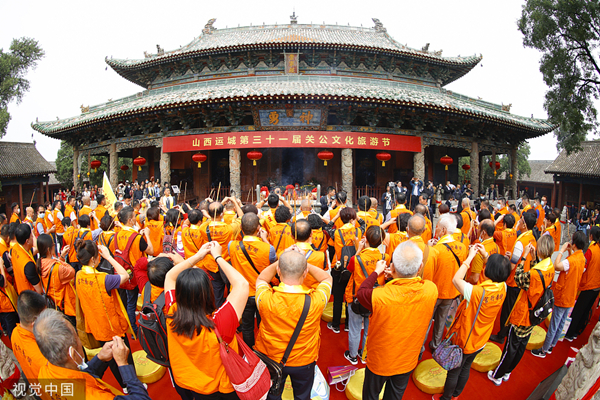CPPCC member advocates protecting revolutionary relics
- By Zhang Rui
 0 Comment(s)
0 Comment(s) Print
Print E-mail China.org.cn, March 10, 2022
E-mail China.org.cn, March 10, 2022
A national political advisor proposed strengthening the protection and restoration of China's revolutionary relics and sites.

Song Jirong, a member of the 13th National Committee of the Chinese People's Political Consultative Conference (CPPCC) and head of the Cultural Relic Hospital at the Palace Museum in Beijing, is attending the political advisory body’s annual session.
In an interview with China.org.cn, she said she visited China's revolutionary sites and museums in Ruijin, Yudu, and Zunyi in May 2021 and found problems. For example, the museum in Yudu, which marks the start of the Long March by the Central Red Army, lacks sufficient funds and talent to protect its relics. In addition, the environmental conditions are bad, lacking cold light and constant temperature and humidity, especially for organic relics such as clothes and paper relics.
According to the statistics released by the National Cultural Heritage Administration in May 2021, China has more than 1,600 revolutionary museums and memorial halls and 36,000 immovable revolutionary cultural relics, as well as more than 1 million movable relics preserved in national museums.
During the 13th Five-Year Plan period, the National Cultural Heritage Administration has approved nearly 400 national key revolutionary cultural relics protection and utilization projects. In the 14th Five-Year Plan and the Long-Range Objectives Through the Year 2035, they also proposed to promote the protection of revolutionary cultural relics and sites.

"Relevant departments should increase support for the rescue protection and restoration of revolutionary cultural relics and give priority to museums and memorial halls marking major historical events," she said.
She also suggested that the competent national departments set up funds to collect revolutionary cultural relics scattered in the hands of private collectors into museums and memorial halls for complete protection and restoration. Further, Song said a national revolutionary cultural relics administration should be established to guide the collection, preservation, repair, and display of such relics in a unified manner.
Besides revolutionary heritage, the political advisor is worried about immovable relics. There are more than 760,000 immovable cultural relics, many of which are architecture.
"Immovable cultural relics also have their own life cycle. How to prolong their life is a problem that we should seriously study. To prolong the life of immovable cultural relics, it is inevitable to repair them, but how to repair and the degree of restoration must undergo scientific and detailed analysis. We have to come up with a practical and feasible scientific solution to restore the old buildings," she said.
Song noted that most civil building materials have a limited lifespan, and the Asian culture that pursues "maintaining the soul" does not demand the absolute eternity of materials. "Before repairing, we must first scientifically analyze and test, and at the same time, we must understand the shape, style, practice, skills, etc. of ancient buildings. Only under the guidance of these intangible cultural heritage standards can the soul of ancient buildings be restored and preserved, shaping their images and characters."

She suggested authorities carry out a national census of immovable cultural relics as soon as possible, use modern scientific and technological means to accurately and finely update the holographic data of immovable cultural relics, and establish a digital platform.
Song also hopes authorities should continuously improve the scientific standard system for protecting and restoring immovable cultural relics and strengthening the guidance of protection and restoration work. Furthermore, the preventive protection measures should also be studied and readied for immovable cultural relics to prevent natural disasters, environmental pollution, and man-made damage.
"And according to the needs of the local society, economy and people's livelihood, the competent authorities can effectively utilize the immovable cultural relics after they are restored. So don't just lock them up. The relics should be truly alive in line with local reality," she added.






Go to Forum >>0 Comment(s)